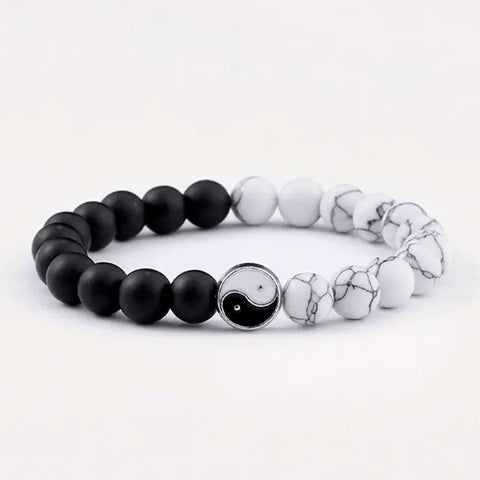Yin and Yang Explained: Balance Your Life with Ancient Wisdom
Table of Contents
- Introduction
- What Is Yin and Yang?
- The Philosophy Behind the Symbol
- Yin and Yang in Nature and the Body
- Yin and Yang in Daily Life
- Why Yin and Yang Still Matter Today
- Conclusion
- FAQs
Introduction
Have you ever wondered why ancient Chinese philosophy places such great emphasis on balance, duality, and flow? At the heart of this worldview lies a deceptively simple symbol: a swirling black-and-white circle known as the Yin Yang. But behind this iconic image is a deep, interconnected understanding of the universe. In this blog, we’ll explore what Yin and Yang truly mean—and how they shape our daily life.

What Is Yin and Yang?
Yin and Yang are among the most enduring and profound concepts in Chinese philosophy. At their core, they represent two complementary forces that exist in all things. Rather than being simple opposites like good and evil, Yin and Yang reflect a dynamic balance — a natural rhythm between opposing yet interdependent elements.
The idea originates from ancient Chinese cosmology, where the universe is understood not as a fixed structure, but as a constantly changing system. Everything in nature — light and dark, movement and stillness, growth and decline — is believed to result from the interaction between Yin and Yang.
Yin is traditionally seen as the feminine, passive principle, associated with darkness, coolness, moisture, inward motion, and stillness. Yang, on the other hand, is viewed as the masculine, active force, linked to brightness, heat, dryness, outward motion, and activity.
Yet these definitions are only the beginning. The true essence of Yin and Yang lies in their interdependence. One cannot exist without the other. Each gives rise to its opposite, forming a continuous cycle of transformation.
Day (Yang) turns into night (Yin), and night gives way to the next day.
Activity is followed by rest, and rest makes way for more activity.
Yin and Yang are not about conflict, but about harmony through contrast. This way of thinking has shaped many traditional Chinese systems. In traditional Chinese medicine, illness is often seen as a result of imbalance between Yin and Yang within the body. In martial arts, effective movement comes from blending softness with firmness. In feng shui, a balanced home includes both Yin areas for calm and rest, and Yang spaces for energy and interaction.

The Philosophy Behind the Symbol
Yin and Yang isn’t just an abstract symbol—it’s a way of seeing the world. Instead of viewing things in rigid categories like good or bad, this philosophy teaches us that everything exists in relation to its opposite. Light makes sense because of darkness; movement has meaning because of stillness. Yin and Yang are constantly shifting and blending, reminding us that life is not static, but always in motion.
At the core of this worldview is the idea that opposites are not enemies—they’re interdependent. When one side grows too strong, it naturally gives rise to the other. Think of the changing seasons, or the way rest follows effort. Balance isn’t something fixed; it’s something we move with. This dynamic dance of change is part of the natural flow of the universe.
This way of thinking comes from a deeper cosmology where everything begins in stillness and unfolds into duality. The swirling black-and-white circle we know as Yin Yang arises from an even more primal state of undivided potential. Over time, this concept became a cornerstone of Taoist thought and traditional Chinese philosophy, shaping how people understood nature, the body, society, and the rhythm of life itself.

Yin and Yang in Nature and the Body
We can see Yin and Yang all around us in nature. Day turns into night, summer fades into winter, fire rises while water flows downward. These are more than just changes—they’re part of a rhythm, a natural back-and-forth where each side depends on the other. Without darkness, we wouldn’t notice light. Without stillness, motion wouldn’t mean anything.
Traditional Chinese Medicine (TCM) is built on this same principle. Illness is often seen as an imbalance between Yin and Yang—like too much heat (Yang) or too much cold (Yin) in the body. Treatments are aimed at restoring harmony, whether it’s through herbs, acupuncture, or food choices. Instead of fighting symptoms directly, the goal is to bring the whole system back into balance. Wearing the Tai Chi Set can support this harmony by providing comfortable, breathable clothing that allows free movement and mindfulness during practice, helping you embody Yin and Yang balance in daily life.
Practices like Tai Chi and Qigong are great examples of how Yin and Yang apply to health and energy. These slow, mindful movements help balance the body’s Qi, or life energy, by combining soft (Yin) and strong (Yang) actions. It’s not just exercise—it’s a moving meditation that keeps your inner energy flowing smoothly, grounding you in both strength and stillness.

Yin and Yang in Daily Life
You can actually see Yin and Yang playing out in your daily routine. Think about the balance between work and rest, or movement and stillness. If you’re constantly “on,” always working or staying busy, you burn out—that’s too much Yang. On the flip side, too much inactivity can make you feel stuck or low in energy—that’s an excess of Yin. Finding a healthy rhythm between the two—pushing forward when needed, then stepping back to recharge—is key to a more balanced, sustainable life. Wearing something like the Tai Chi Yin Yang White Turquoise Bracelet can serve as a subtle reminder of this balance, helping you stay mindful of when to act and when to pause.
Yin and Yang can also help us understand our emotions and relationships. Sometimes one person brings calm while the other brings energy, or one listens while the other speaks. That’s balance in action. In tough times, emotions can tip too far in one direction—too much anger, sadness, or even excitement. But when we start noticing the shifts and giving space for the opposite energy to enter, things naturally settle. It’s not about being perfectly even all the time—it’s about staying in tune with the flow.

Why Yin and Yang Still Matter Today
In a world that moves fast and demands constant productivity, it’s easy to lose our balance. We push ourselves to always be doing, achieving, responding—often forgetting the need for rest, reflection, and simply being. That’s where the wisdom of Yin and Yang comes in. It reminds us that life isn’t meant to be lived in extremes. True well-being comes from flow—knowing when to act, and when to step back.
Instead of seeing opposites as conflict, Yin and Yang encourages us to embrace duality. It helps us live more mindfully—recognizing the ebb and flow in our emotions, energy, and relationships. When we’re aware of these shifts, we can move with them instead of against them. That’s the beauty of this ancient idea: it’s not just philosophy, it’s a quiet guide to more harmonious living in today’s noisy world.

Conclusion
Yin and Yang teaches us that life is not about choosing one side over the other, but learning to move with the balance between them. In a world full of noise and extremes, this ancient wisdom offers a quiet, steady compass. Whether in our health, relationships, or daily routines, tuning into the rhythm of Yin and Yang can help us live with more harmony, awareness, and grace.
FAQs
-
What are Yin and Yang?
They are two opposite but complementary forces that exist in everything—like night and day, rest and activity. -
What does the Yin-Yang symbol mean?
It shows how opposites are connected. Each side contains a small dot of the other, symbolizing balance and constant change. -
Is Yin female and Yang male?
Yin is often seen as feminine (cool, passive), while Yang is masculine (warm, active), but both energies exist in everyone. -
Are Yin and Yang Chinese or Japanese?
They originated in ancient China, but Japan also adopted the concept, calling it In and Yo. -
How do Yin and Yang relate to health?
Traditional Chinese Medicine uses Yin and Yang to explain imbalances—like too much heat or cold in the body. -
What’s the difference between Yin and Yang?
Yin is inward, cool, and dark; Yang is outward, hot, and bright. Neither is better—they need each other. -
Are emotions Yin or Yang?
Calmness and introspection lean Yin; excitement and expression are more Yang. -
Can a person be more Yin or Yang?
Yes—some people are naturally more reflective (Yin) or energetic (Yang), but balance is the goal. -
What are Yin and Yang signs in astrology?
Water and earth signs tend to be Yin; fire and air signs are more Yang. -
Why does Yin and Yang still matter today?
It helps us find balance in a busy world—between work and rest, effort and ease.
Related articles:
The Philosophy of Yin-Yang and the Five Elements in Ne Zha Movie
The Balance of Yin and Yang in Nezha Movie: Symbolism and Philosophy






























